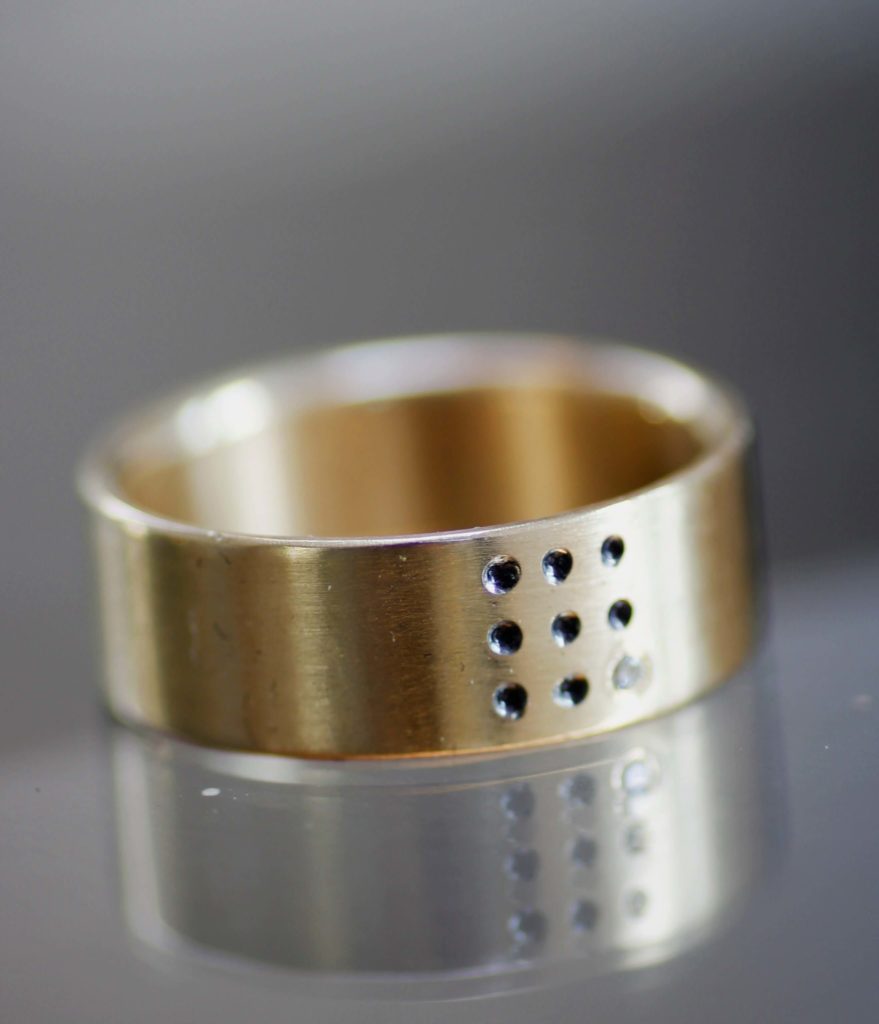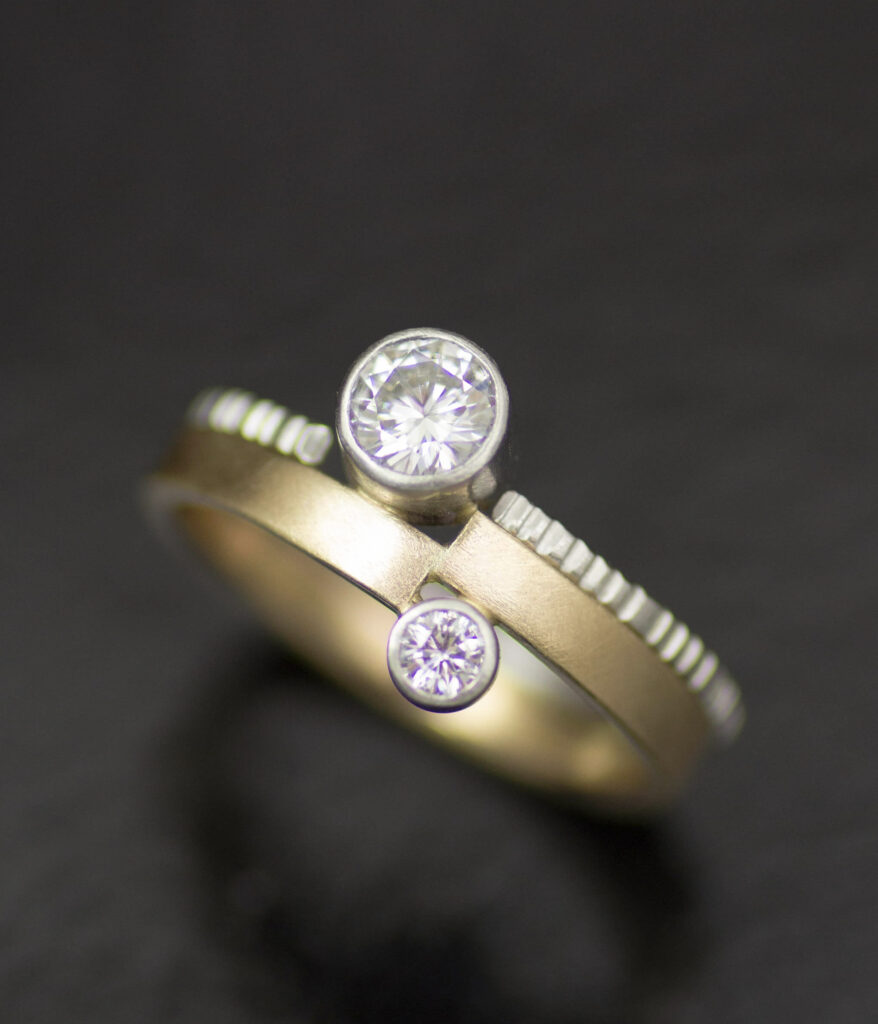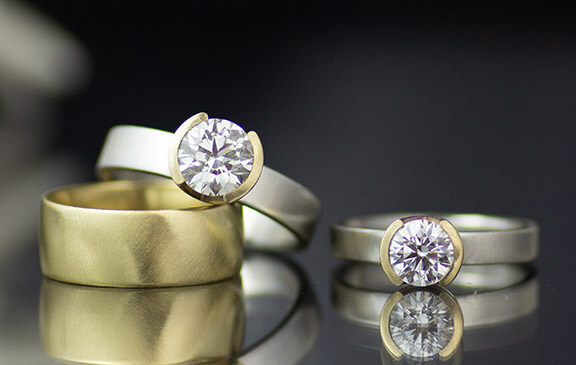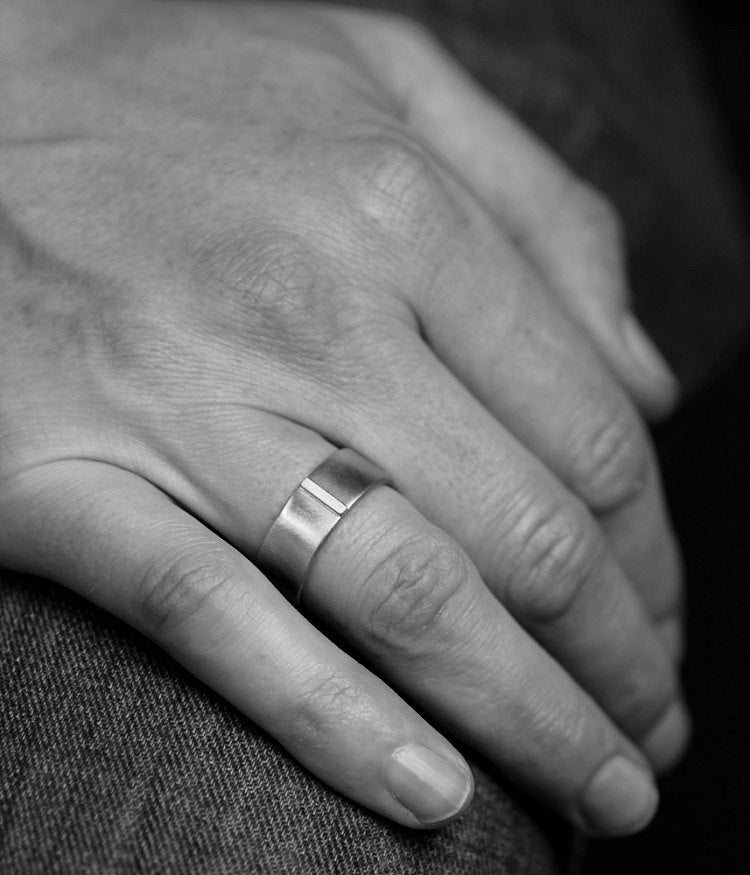
Karats, carats, carrots? WTF?
When it comes to jewelry, two terms often come up in conversations: “karat” and “carat.” While they sound similar, they refer to distinct aspects of jewelry : karat pertains to gold purity, while carat relates to the weight of gemstones. Yes, using two almost identical words to describe different concepts which frequently occur in the same area is confusing. Not my choice, it was like that when I got here.
Understanding the meanings and significance of karats and carats is essential for anyone interested in the world of jewelry and I hope I can provide some clarity to help you make the best decision.
Let’s explore the differences between karats and carats, their applications in the jewelry industry, and how they impact the overall value and appeal of jewelry pieces.
Karat: Decoding Gold Purity
Let’s face it. Gold is rad. It’s pretty, it’s reflective and dynamic and lasts a long, long time. It’s held power over humans for millenia. However, pure gold in its natural state is too soft to be used for most jewelry purposes. To enhance its durability and strength, it is typically alloyed with other metals, such as silver, copper, nickel, or zinc. The term “karat” (often abbreviated as “K” or “kt”) is employed to measure the purity of gold by indicating the proportion of pure gold content within an alloy.

Karat Scale and Common Karatages
The karat scale typically ranges from 24 to 1, with 24 karat (24K) gold representing pure gold.Each karat signifies 1/24th part of the whole, reflecting the percentage of pure gold in the alloy. Weird, right? Like, who picked 24? What’s a karat anyway? Clearly devised before the metric system, according to my extensive googling (and the Encyclopedia Brittanica) this system of indicating the relative proportion of gold originated with a medieval coin called a mark. A mark weighed 24 carats (in this case, the carat was the same as that used in the weighing of gems and was theoretically equal to the weight of the seed of the coral tree, which was historically used as a reference due to its consistent weight. Whatevs).
Pure gold could not be used to produce marks because it was too soft, so copper or other metals were added to produce a hard alloy; the purity of the coin was then expressed by the proportion of its carat weight that was actually contributed by gold. (citation:Brittanica.com) Thus, 18 karat (18K) gold contains 18 parts (or 75%) pure gold and 6 parts other metals. Similarly, 14 karat (14K) gold consists of 14 parts (or 58.3%) pure gold and 10 parts other metals. The most common karatages used in jewelry are 18K and 14K, as they balance purity, durability, and affordability. However, 10K and 9K in the US and other countries respectively is also commonly used. Generally, this is because these numbers create a nice division of the 24. But of course Americans being contrary, we have elected 10K rather than 9. Just cuz, I reckon. I stopped caring at this point.
Color Variations in Gold Alloys
While pure gold possesses a rich yellow hue, the addition of other metals alters its color. For example, the incorporation of copper imparts a reddish tint, resulting in rose gold. Conversely, metals like nickel or palladium can create white gold, which is often rhodium plated to achieve a bright, silver-like appearance. Yellow gold, with its warm and classic appeal, remains a popular choice for many individuals. If you want more information and then some on the differences in yellow, rose, white and palladium white gold, I wrote all about that here.
Karat Markings
Karat markings serve as indicators of gold purity and are typically engraved on the inner surface of jewelry items. For instance, a gold ring may bear the marking “18K” or “14K” to denote its karatage. However, there are some things you should know about quality marks, particularly if you live in the US. Firstly, a quality mark denotes specifically “100%” of the metal in the item marked. So the metal part of a ring marked 18K gold should be made of 100% 18K gold. This means products that are mixed metals – say a 14K gold ring with a platinum bezel or a platinum ring with an 18K gold inlay – are not legally supposed to be marked because they are not 100% of either metal. A lot of my work falls into this category. Additionally, some items may be too small or too delicate to be quality marked.
More importantly, the US – unlike other countries such as the UK and EU – does not have a third party assay system. This means that anyone can purchase a quality stamp and put it on anything they like. Though technically not legal, I don’t know of any metal marking police breaking down the doors of perpetrators. And even though there is a third party system in other countries, that does not mean everyone adheres to it. I personally have received jewelry from clients from these areas that were incorrectly marked. All this to say, a quality mark is only as good as the person doing the marking and if you’re concerned, many larger jewelers have ways of testing the metal.
Carat: Unveiling the Weight of Gemstones
While karat focuses on gold purity, the term “carat” is employed in the context of gemstones to measure their weight. Somewhat confusingly, in most other English speaking countries, karat, term for gold purity and carat, the term for gem weight are both spelled with a K. So just saying, in this case, you’re welcome. America rules. (JK, like JK times 1 million).

Carat as a Unit of Weight
In the world of jewelry, a carat is a standardized unit of weight used to measure gemstones. Originating, inconveniently, from the SAME carob seed obsession, carat has become the universal standard for weighing gemstones. However, in this case, one carat is equivalent to 200 milligrams or 0.2 grams. (So now we’re using the metric system. Confused? Me, too. I didn’t create this system, I’m just trying to make it less yuck.)
Relationship Between Carat Weight and Gemstone Size
Carat weight directly affects the size of a gemstone. As the carat weight increases, so does the physical size of the gemstone. This correlation is due to the density and composition of different gemstone varieties. However, it is not a precise measurement of the actual dimensions of a
gemstone, and the cut of the stone will greatly affect its carat weight. For example, a 1 ct. brilliant cut diamond will typically have an approx. 6.5mm table diameter. But depending on how it is cut, the table could be larger or smaller with a heavier or lighter pavilion. (Not sure what these different cuts mean? That post is coming soon!) In my work I generally state the diameter measurement of a stone, both because I bezel set my stones and because this is the part of the stone that is most meaningful to the customer and the one they are most likely to easily be able to understand and visualize.
A 1 ct rose cut stone, on the other hand, which has a flat bottom, will be closer to 7.5mm in diameter.
Carat Weight and Gemstone Value
While carat weight plays a role in determining the value of a gemstone, it is important to understand that carat weight alone does not dictate its worth. Other factors such as color, clarity, cut, and overall quality are equally significant in assessing the value of a gemstone. A smaller gemstone with exceptional color and clarity may be more valuable than a larger one with lesser quality characteristics. Additionally, keep in mind that stone prices tend to increase exponentially, not linearly, especially with natural stones as finding a large enough piece of “rough” that can be cut down to the requisite size becomes commensurately more difficult.
Carat Weight and Rarity
In certain gemstones, larger carat weights are relatively rarer to find compared to smaller carat weights. This rarity factor can impact the desirability and price of gemstones. For example, in the case of colored gemstones, larger carat weights can exhibit more intense and vibrant colors, making them highly sought after by collectors and enthusiasts. With things like sapphires, in particular, larger, quality stones can be much more expensive than a diamond of similar weight.
Carat Weight and Gemstone Settings
Carat weight considerations extend beyond the gemstone itself and also impact the design and construction of jewelry settings. The weight and size of the gemstone must be taken into account when creating a piece of jewelry. As I use almost exclusively bezel settings in my work, I tend to focus more on finding the stone with greatest table diameter for price. I also caution you to not get caught up in carat weights or their purported meanings. The most important thing is to get what you like.
Carrot: Popular orange vegetable
Also available in purple, yellow and other fancy colors – not unlike sapphires.
In case your attention span is too short to read this entire entry, here’s the Cliff’s Notes: karat refers to the purity of gold, while carat refers to the weight of gemstones. Both are available from sustainable and ethical sources at LOLiDE. Get shopping.



